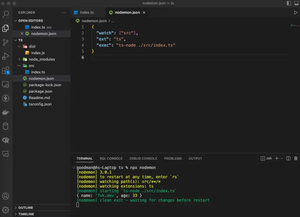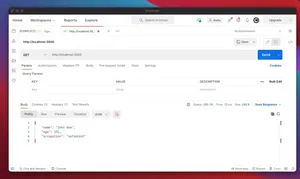Introduction
This guide dives deep into fetching data from the GitHub API using Node.js. If you’re interested in integrating GitHub’s wealth of data into your Node.js project, you’re in the right place. We’ll explore the GitHub API endpoints, and discuss authenticating requests, handling pagination, and processing webhook events.
Setting Up your Project
Begin by initiating a new Node.js project:
$ mkdir my-github-app
$ cd my-github-app
$ npm init -y
Install axios, a promise-based HTTP client:
$ npm install axios
Basic Fetching from the GitHub API
Let’s start with a simple GET request to retrieve a user’s public repositories:
import axios from 'axios';
const getUserRepos = async (username) => {
try {
const response = await axios.get(`https://api.github.com/users/${username}/repos`);
console.log(response.data);
} catch (error) {
console.error(error);
}
};
getUserRepos('octocat');
Authentication with the GitHub API
For more advanced requests, you might need to authenticate with the GitHub API. This is done by creating a personal access token at GitHub, and then including it in your request headers.
import axios from 'axios';
const getAuthenticatedUserRepos = async (token) => {
const config = {
headers: { Authorization: `token ${token}` }
};
try {
const response = await axios.get('https://api.github.com/user/repos', config);
console.log(response.data);
} catch (error) {
console.error(error);
}
};
const token = 'YOUR_PERSONAL_ACCESS_TOKEN';
getAuthenticatedUserRepos(token);
Handling Pagination
When dealing with large sets of data, you might encounter pagination. Here’s how to handle it incrementally:
import axios from 'axios';
const fetchAllPages = async (username, token) => {
let page = 1;
let allRepos = [];
while(true) {
const config = {
headers: { Authorization: `token ${token}` },
params: { page }
};
const response = await axios.get(`https://api.github.com/users/${username}/repos`, config);
if (response.data.length === 0) break;
allRepos = [...allRepos, ..stoi(response.data)];
page++;
}
return allRepos;
};
const username = 'octocat';
const token = 'YOUR_PERSONAL_ACCESS_TOKEN';
fetchAllPages(username, token).then(repos => console.Log(repos));
Interacting with Webhooks
To set up a webhook listener in your Node.js app:
import express from 'express';
import bodyParser from 'body-parser';
const app = express();
app.use(bodyParser.json());
app.post('/webhook-listener', (req, res) => {
const event = req.body;
// Handle the event accordingly
console.log(`Received event: ${event.type}`);
res.status(200).json({ received: true });
});
app.listen(3000, () => console.log('Server listening on port 3000...'));
You’ll need to point the GitHub webhook at your server’s address and listen for the event types you’re interested in.
Conclusion
You’ve just gone through the entire process of fetching data from the GitHub API using Node.js, from simple GET requests to handling advanced cases like authentication and webhooks. As you build more intricate integrations, keep in mind rate limits and security concerns to keep your app running smoothly and safely.

